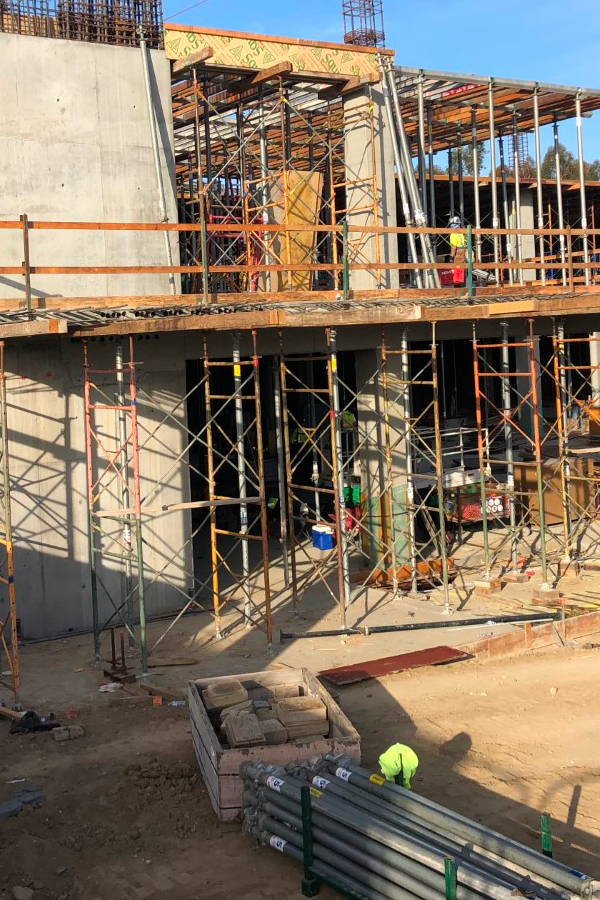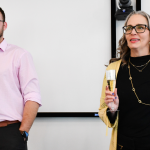UCI Health Sciences Complex: Breathtakingly Sustainable
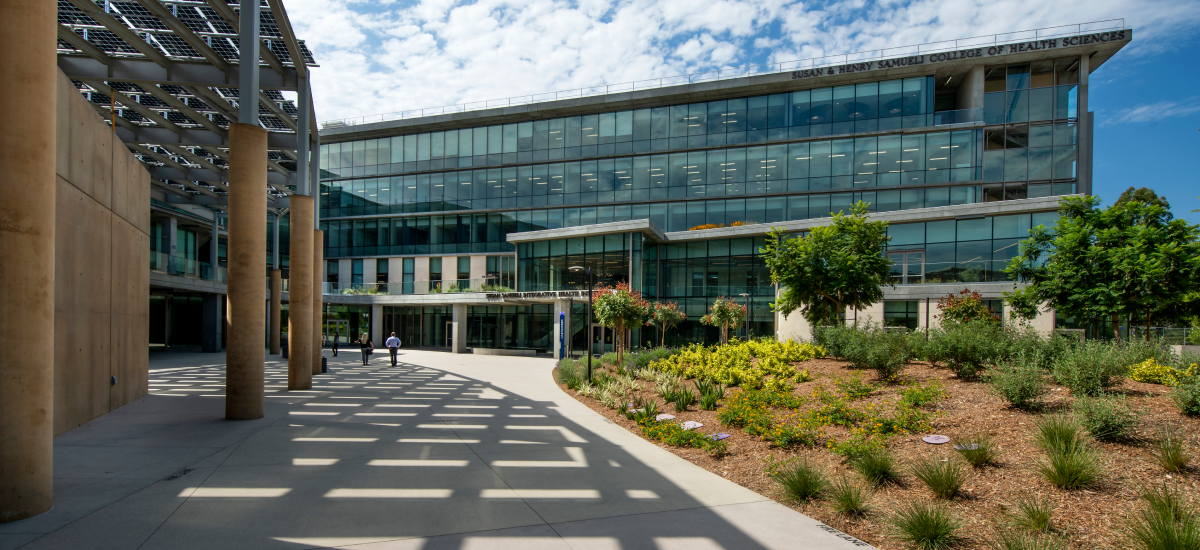
A Gateway to Campus
On the corner of California and Bison Avenue in Irvine, California, lies an impressive 9-acre complex that ushers students, faculty, and visitors onto the University of California-Irvine (UCI) campus with cutting-edge facilities. The UCI Health Sciences Complex sets the tone for its university experience by greeting its tenants with state-of-the-art technology for transformative learning, integrative spaces that foster collaboration, and a mindful balance of urban design aesthetics intertwined with sustainable greenspaces.
The UCI Health Sciences Complex consists of the Susan & Henry Samueli College of Health Sciences and the Sue & Bill Gross Nursing and Health Sciences Hall. Between the two interconnected structures, they host 10 classrooms, 18 conference rooms, 87 clinical spaces, 9,500 GSF of simulation and skill center space, and a 200-seat auditorium connected via a bridge and a roof terrace for easy access to the main complex.
Alvine Engineering acted as a core partner in the project’s design and construction. The project utilized a design-build delivery method, meaning our engineers and designers worked closely with the general contractor and other design entities from the initial technical proposal of the project to construction. Our firm provided mechanical, electrical, plumbing, and telecommunication design that delivered on the client’s vision for the space while staying compliant with some of the highest standards in sustainable and eco-conscious design. The UCI Health Sciences Complex has garnered national attention for its ingenuity. It is a LEED Platinum-certified building and won the Design-Build Institute of America’s 2023 Excellence in Healthcare Facilities award and a 2023 Los Angeles Green Building Council Innovation Award (Health and Wellbeing category).
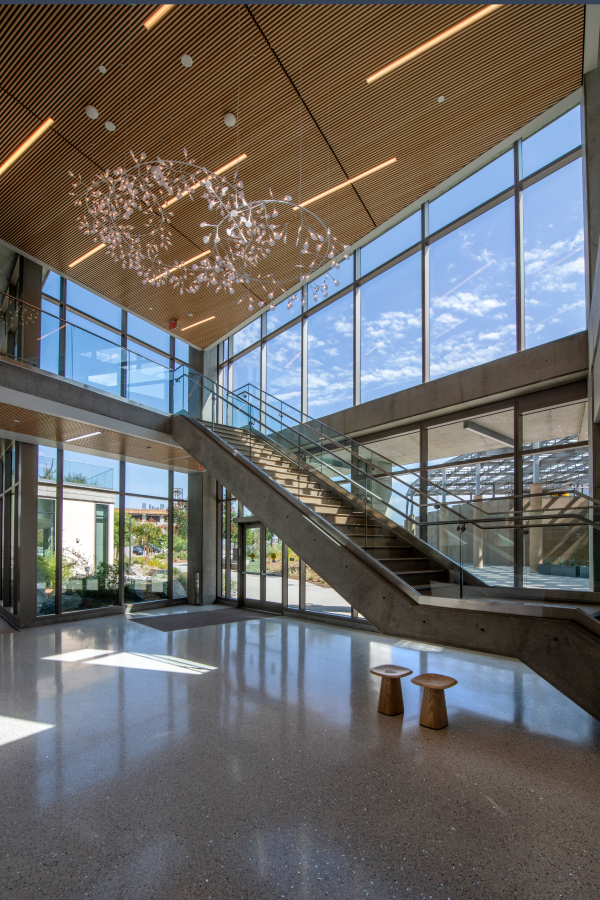
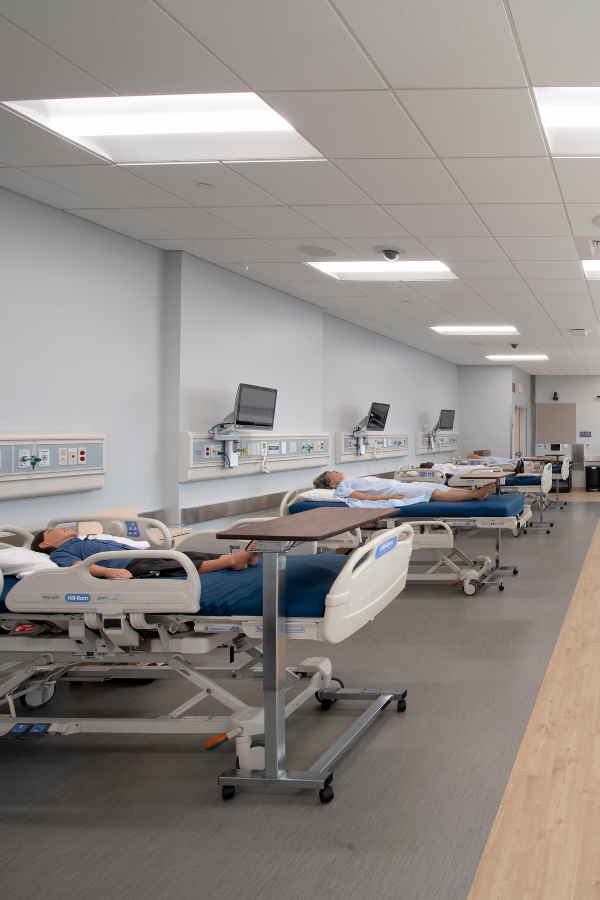
The HVAC Systems
Brian Stara, a mechanical systems designer at Alvine Engineering, has had extensive experience working on the UCI campus and has previous experience with other medical specialties, such as optometry and animal research laboratory structures. Brian’s expertise and experience working with California’s forward-thinking energy codes and UCI’s ambitious design standards played a pivotal role in providing high-performance HVAC and plumbing solutions that suited the unique needs of the client.
The site contains multiple air handling units: one unit is located on the roof, which services the conditioning needs of the offices throughout the complex. The second unit, located on the first floor, was dedicated to servicing the pharmacy and exam areas. An additional air handling unit was necessary to handle the needs of the nursing wing.
“There are different requirements for ventilation and conditioning for office rooms when compared to exam areas. There’s also a specialized compounding room in the pharmacy that requires sterilized air.” Brian stated.
The HVAC system utilizes a chilled-water loop. The system itself was a fairly simple application that required complex approaches depending on the areas they served in order to meet UCI’s design standard compliance.
“We could extend campus chilled water system over to the complex from the main central system,” Brian explained, “However, we could not extend the high-temperature water that the campus uses.”
In order to create high-temperature water for the facilities, our team could not utilize boilers for heat in California due to the state’s codes and regulations. Through thoughtful analysis, the mechanical team’s approach utilized a heat recovery chiller that could take rejected water from the chilled system, extract the heat from it, and harness it to create hot water.
“It’s one of the more unique systems I’ve worked on,” Brian stated, “While we were working on the chilled water system, the project team decided it would be beneficial to upsize all of the chilled water mains surrounding the structure to serve future buildings.”
By futureproofing certain aspects of the building’s infrastructure, the project team helped better prepare the campus infrastructure for future buildings and updates, increasing the value of the facility and lowering overall costs for future development.
The Reclaim Game
In accordance with the client’s specifications, water reclamation was originally designed to be integrated into the entire facility. However, after due consideration from the client, the project team made a collaborative decision to limit water reclamation to the outdoor irrigation system. In addition, multiple “living walls” were included throughout the facility. Living walls are a biophilic design feature that involves attaching vertical gardens to architectural structures. Biophilic design was an important consideration for the client, as student wellness and design that supports holistic health were top priorities. The design team’s vision was to ensure that greenspaces were readily-accessible for students and faculty regardless of where they were located on campus. Our mechanical team helped achieve this while maintaining the stringent eco-conscious design standards of the project.
“The site has the capability and connections for facility-wide water reclamation,” Brian reiterated, “If that’s something the client wants to pursue in the future, they won’t need a massive overhaul of the plumbing system.”
The water reclamation system is another great example of the project’s thoughtfulness surrounding future construction. If the client pursues campus-wide water reclamation for the campus, the plumbing infrastructure at the UCI Health Science Complex is designed to be able to support that initiative.
Brian stated that, in order to be compliant with LEED platinum standards, the site utilized extremely low-flow fixtures such as showerheads, toilets, and faucets that help the campus utilize its resources efficiently.
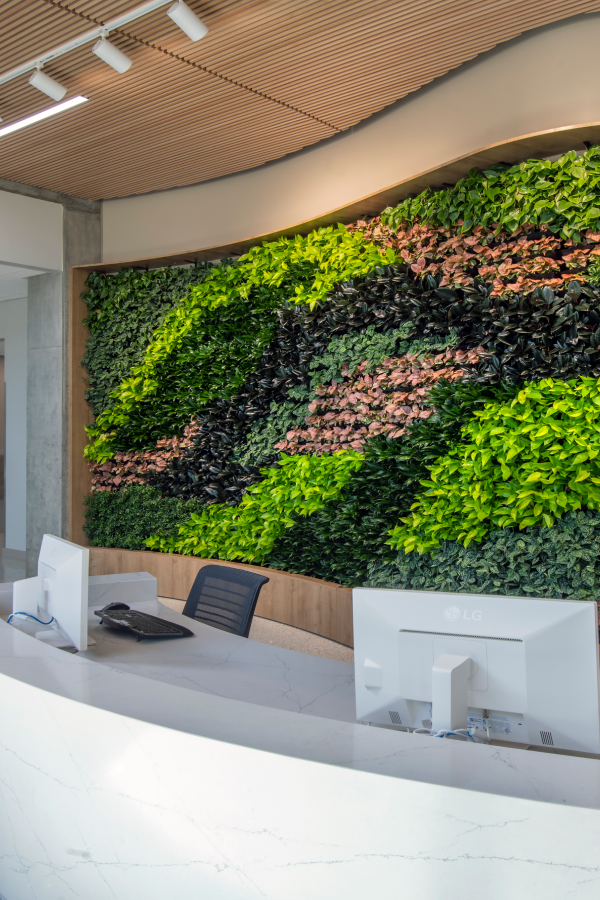
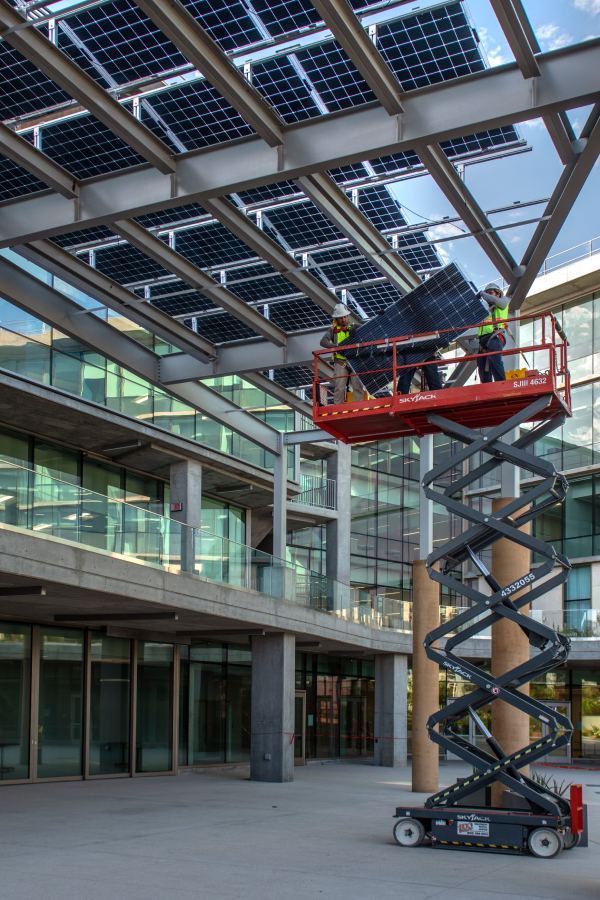
More Power to Ya!
Nick Andera, P.E., LC, is a leader within our electrical team and is a project manager with over ten years of experience working with energy-efficient, cost-effective electrical design. Nick, like Brian, has had previous experience with the client working on structures such as the Anteater Learning Pavilion and the Interdisciplinary Sciences Building.
The electrical power for the UCI Health Sciences Complex originates from an extension of a pre-existing 12kV distribution system, which was intercepted at an existing manhole. Our team utilized an SF6 sectionalizing switch that has the capability to feed electricity to the current structure, along with additional buildings that will be located adjacent to the health complex. This decision further drives home the project initiative of preparing the site’s mechanical and electrical systems for future development.
“The sectionalizing switch will serve this building as well as multiple others,” Nick explained, “This includes the Gavin Herbert Eye Institute.”
The emergency lighting of the building was fed through a UL924 lighting inverter device that serviced egress lighting fixtures. A 40kW generator is responsible for feeding power to the elevators in the event of a power outage.
While the complex was registered as one project, they are two distinct buildings. One of the more unique applications executed on this project in regard to the electrical system was the use of multiple risers.
“We had stacked electric rooms, one in each building,” Nick explained, “The buildings are connected via a central link, but, in many ways, we had to treat them as if they were two independent facilities.”
The electrical team also had to be cognizant of the incoming telecommunications and data infrastructure that the campus needed. Thousands of feet of fiber optic and copper cabling were distributed from the central campus hub and were integrated into the UCI Health Sciences Complex.
Design-Build and Innovation
Both Nick and Brian were in wholehearted agreement that one of the beautiful things about the design-build process was going above and beyond the client’s baseline necessities in innovatively creative ways that bring added value to the campus and its tenants. The UCI campus is a strong advocate for the design-build process and sustainability. All of the projects that Alvine Engineering has been involved with have been LEED-accredited.
One example of innovation on this project was our electrical team ingeniously constructing a photovoltaic system over an expansive outdoor patio that provides a unique shading and aesthetic to the campus while also creating a renewable energy source that scores LEED points and assists the structure in achieving its platinum status.
Another example of innovation is the Mussallem Nutritional Education Center. This classroom is a cutting-edge teaching kitchen designed for classes surrounding cooking and patient nutrition. However, traditional hoods would have severely limited user line-of-sight and would have made using the room’s audiovisual applications difficult. As a result, our mechanical team utilized a hoodless ventilation system that allows the space to make the most out of its broadcasting capabilities and allows for an unobstructed view of the kitchen. This hoodless design is one of only a few in the country at the time of construction.
“It is set at the front entrance of the entire campus,” Brian concluded, “People entering the campus…this will be the first building they see. We wanted that to be a truly exceptional experience aesthetically while also meeting the practical needs of the building to help students thrive.”
Learn more about projects similar to the UCI Health Sciences Complex by visiting our portfolio page.
